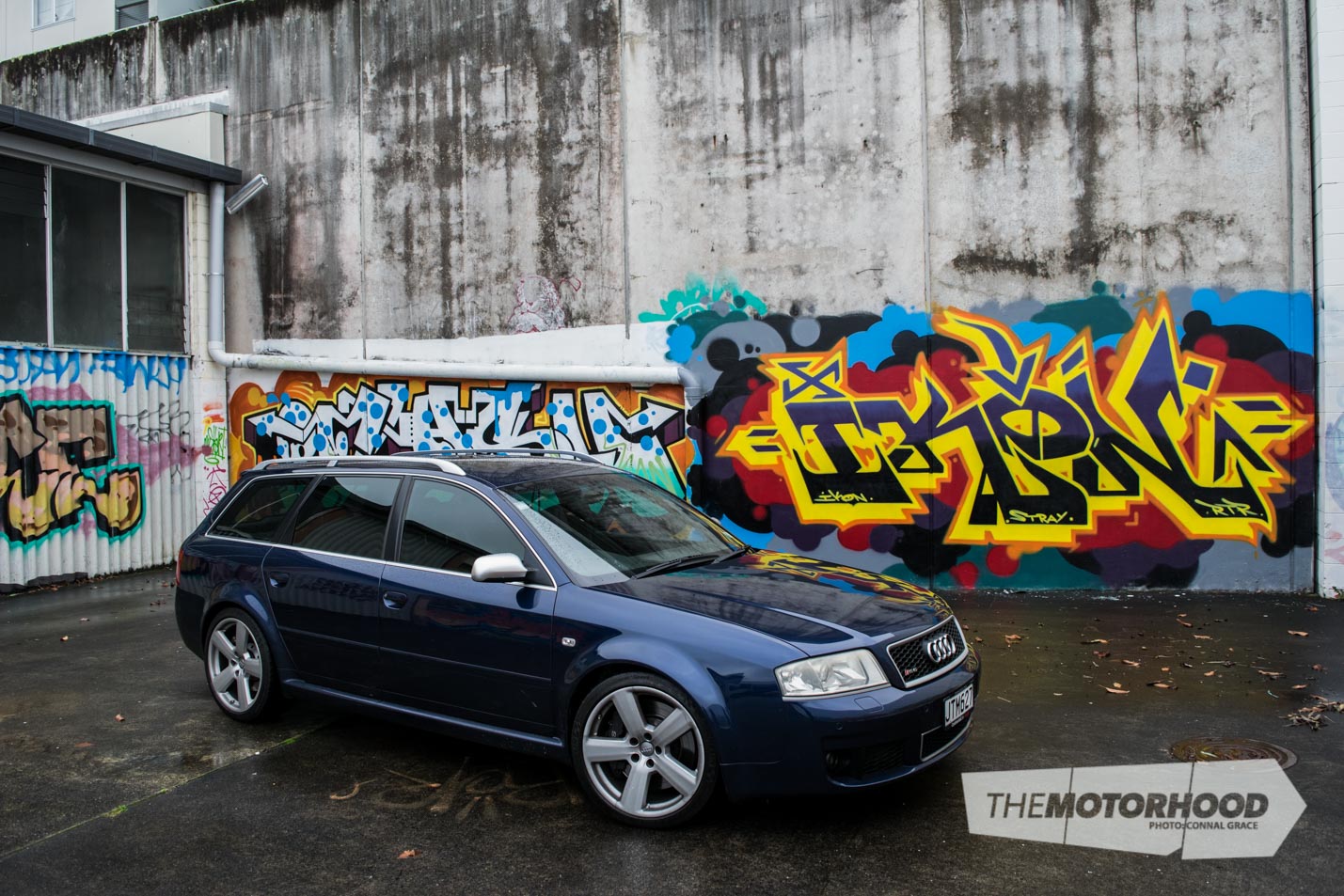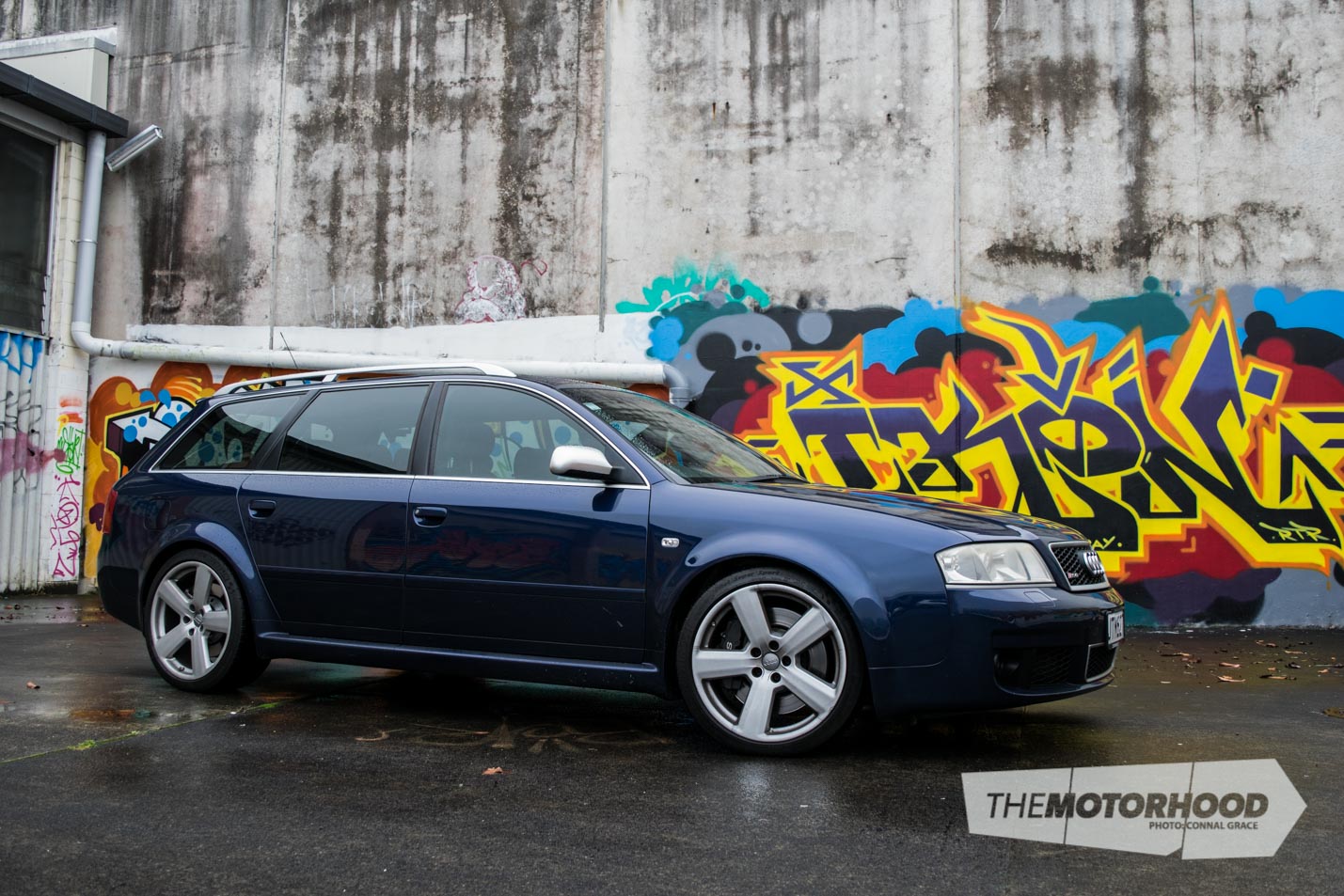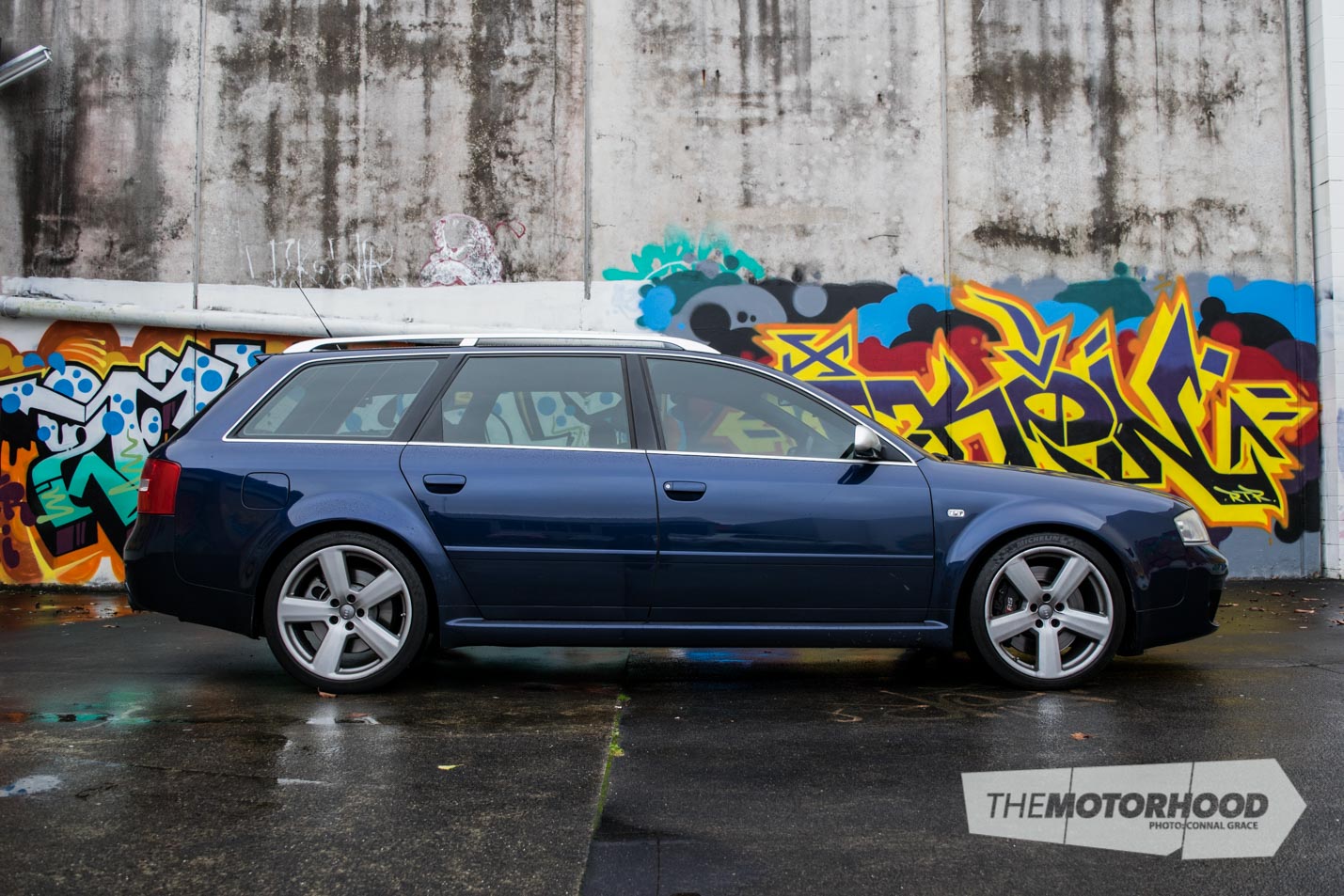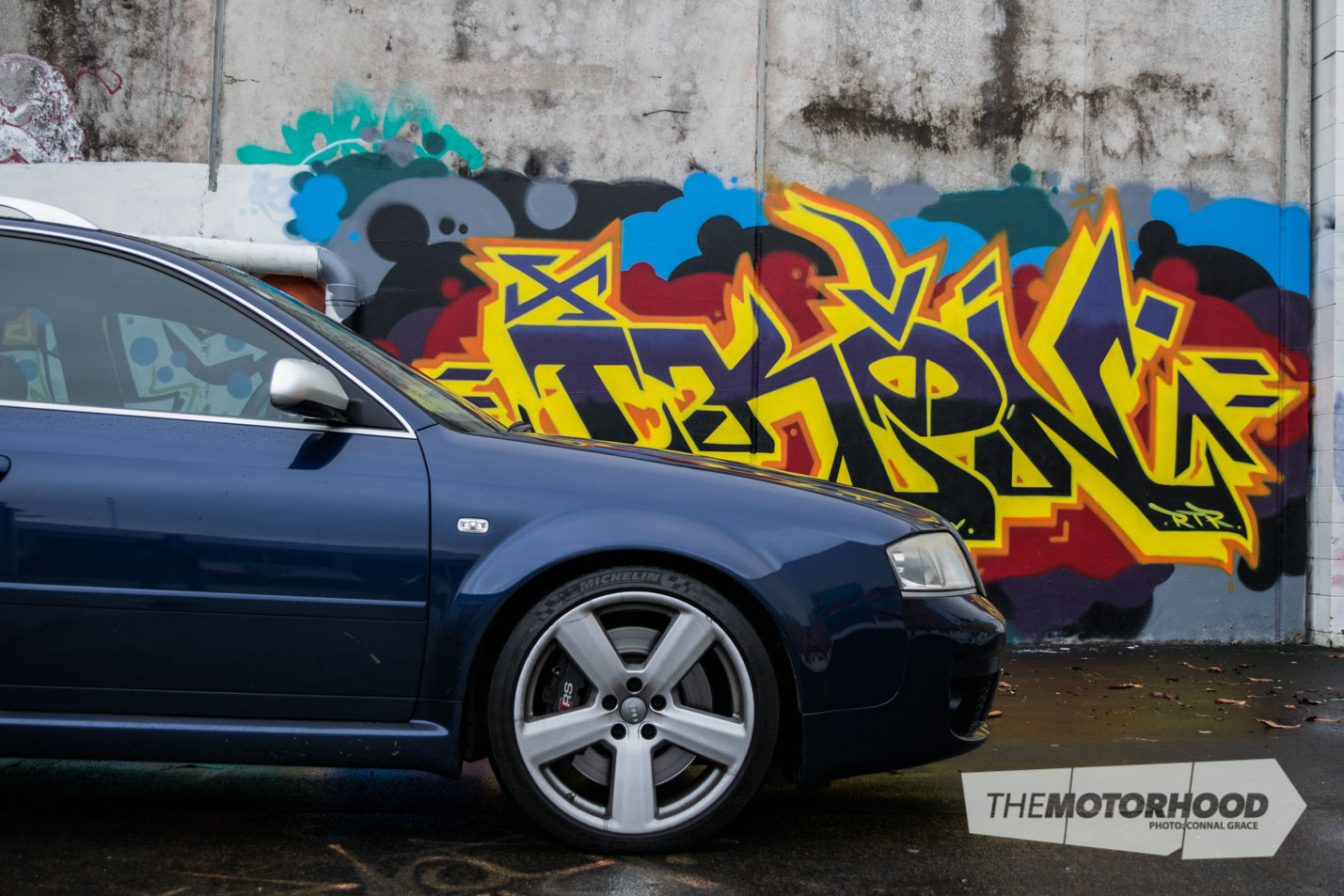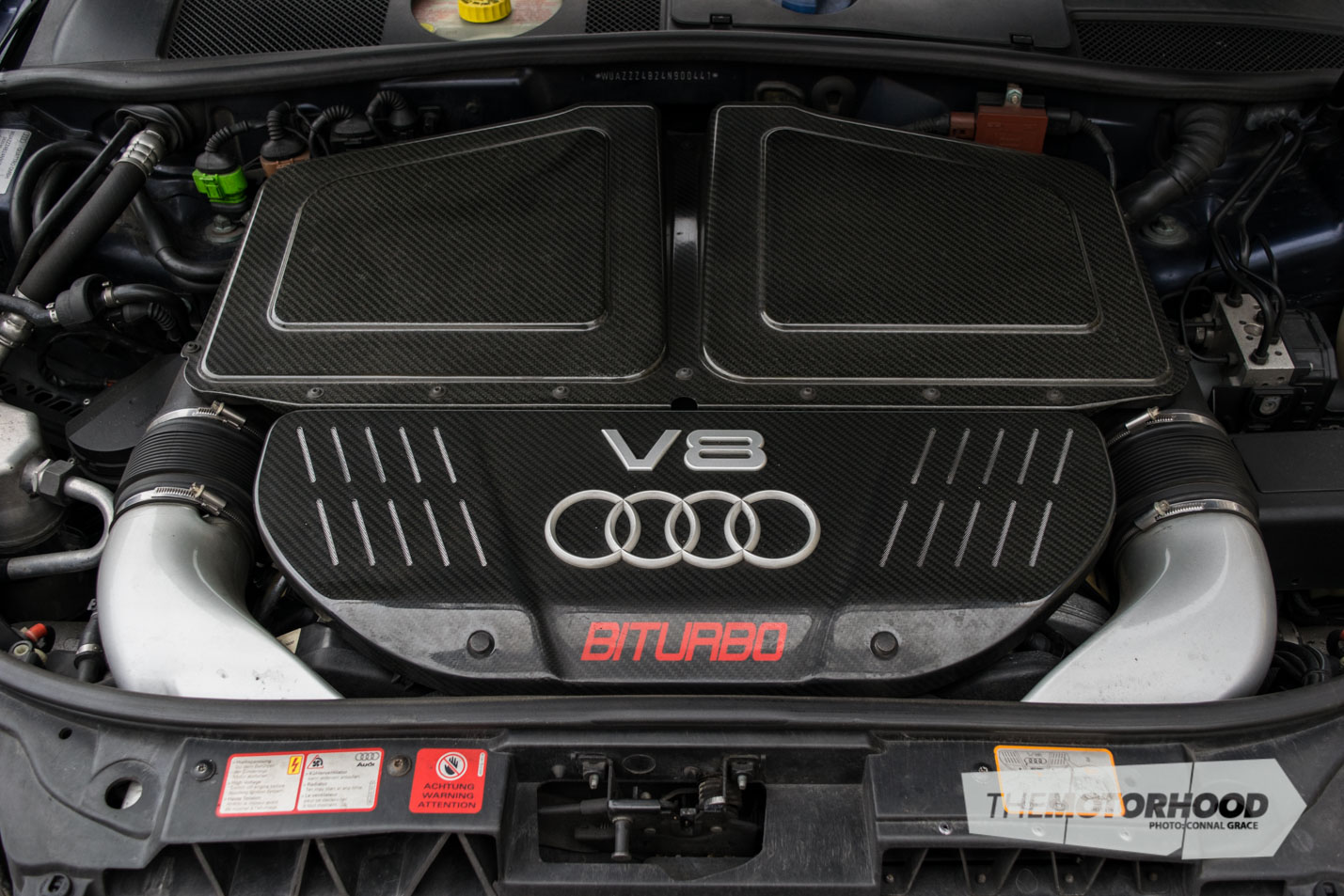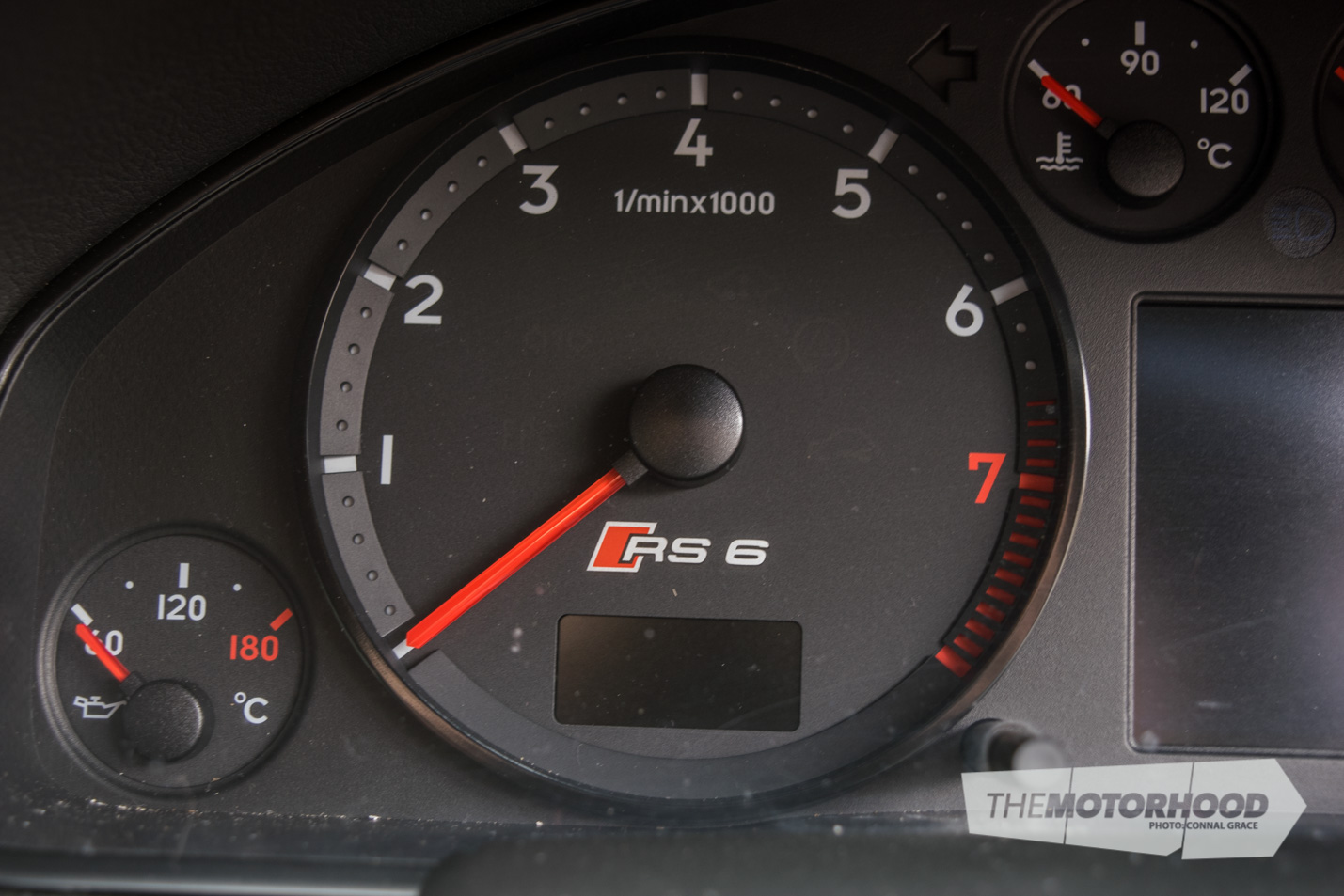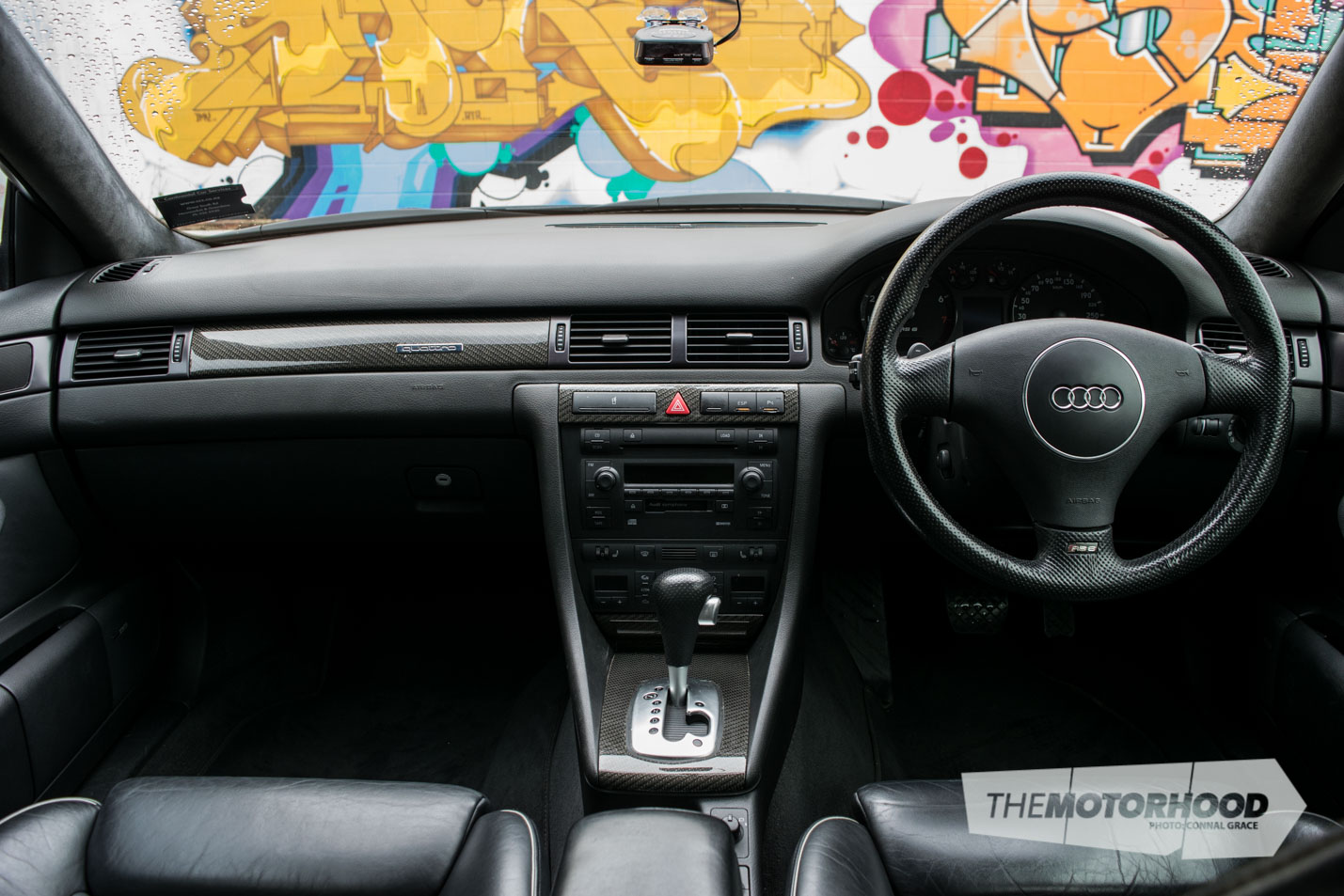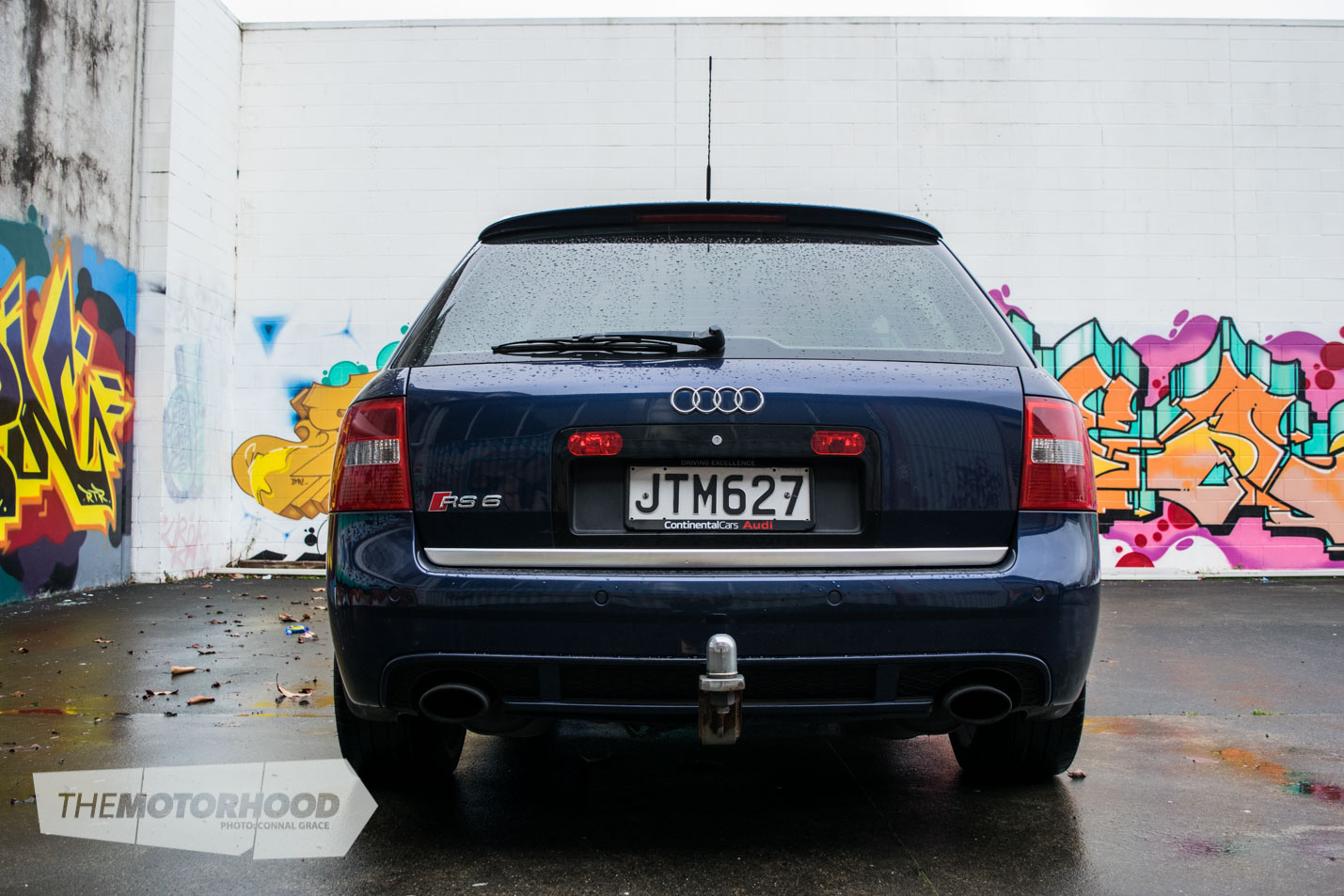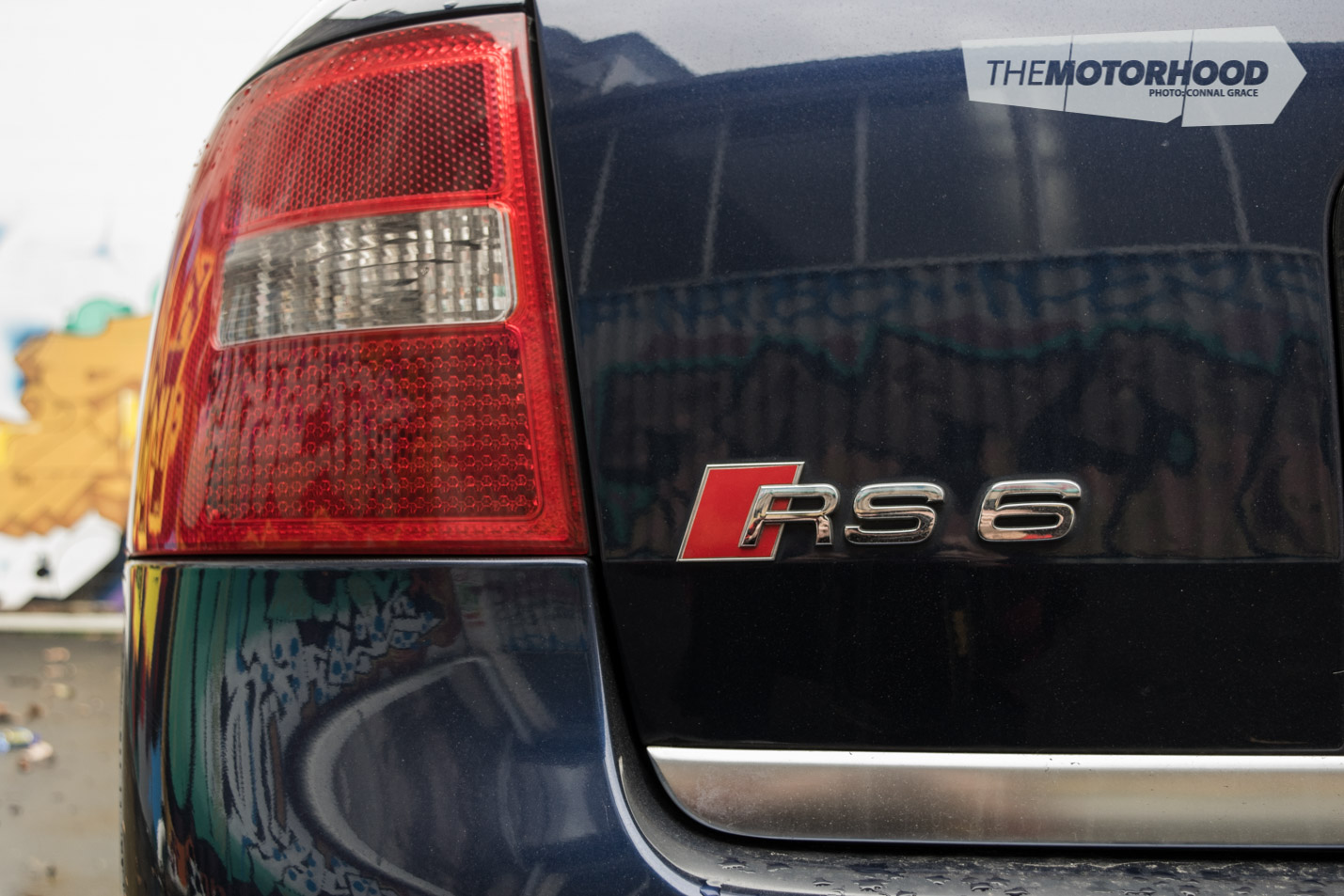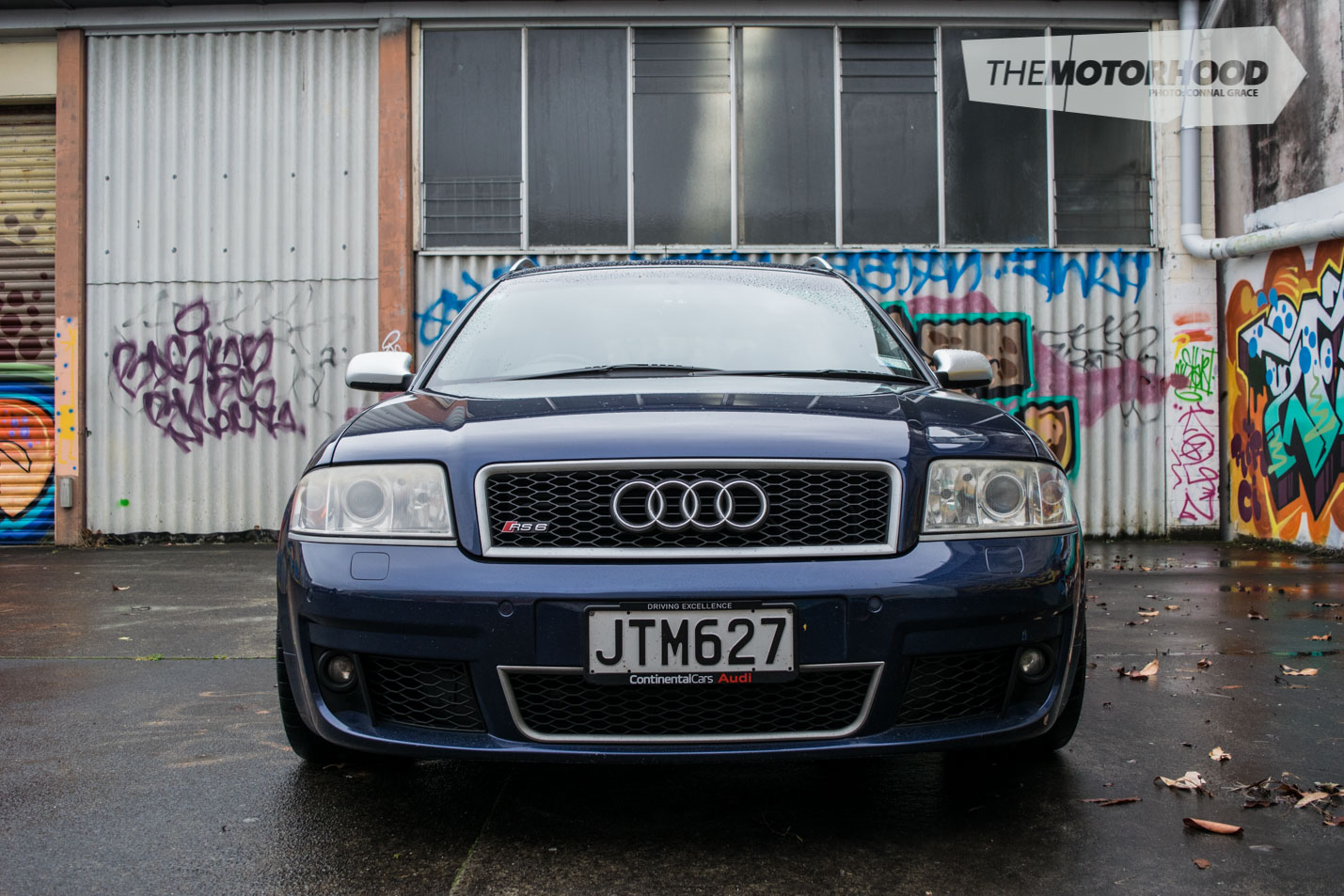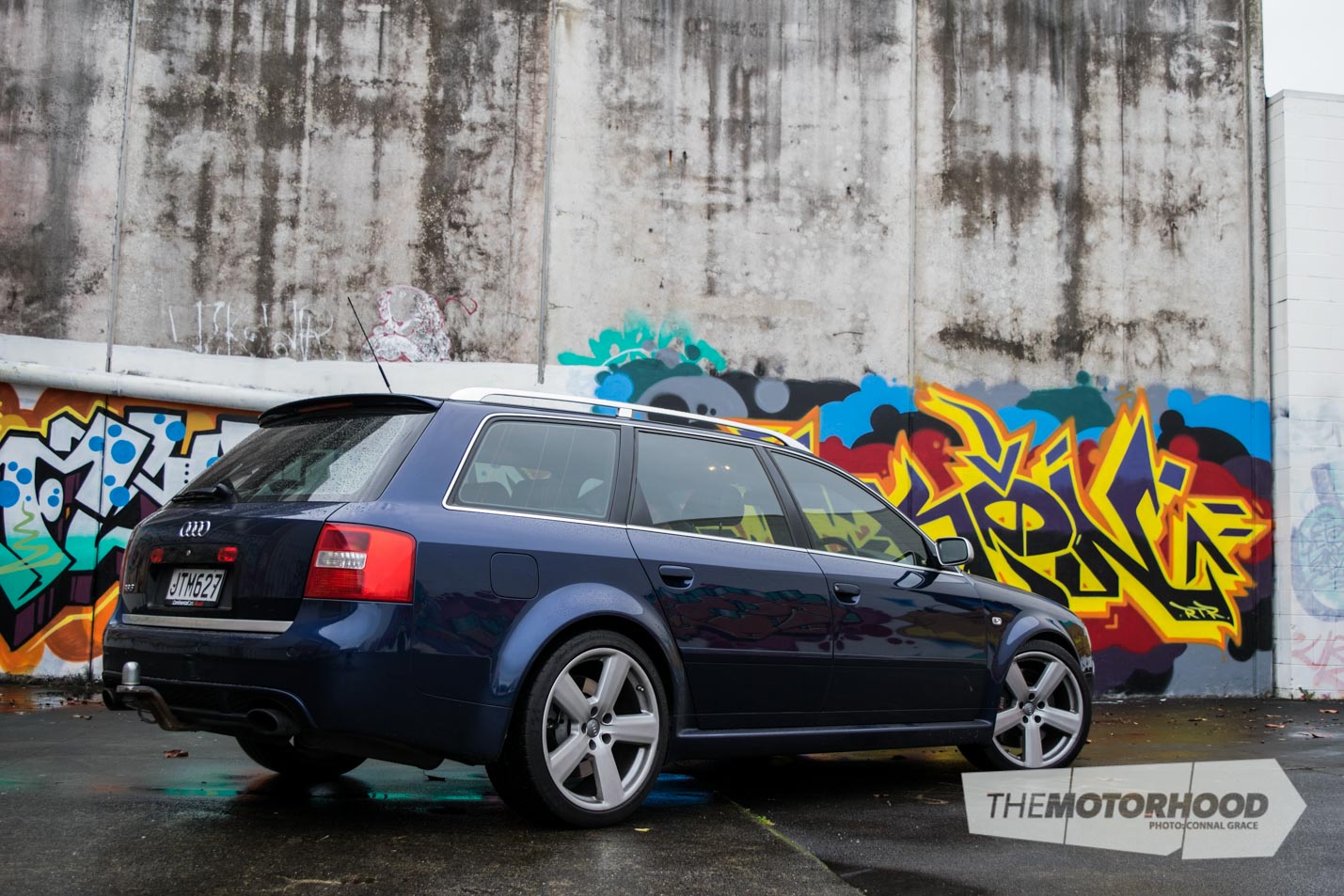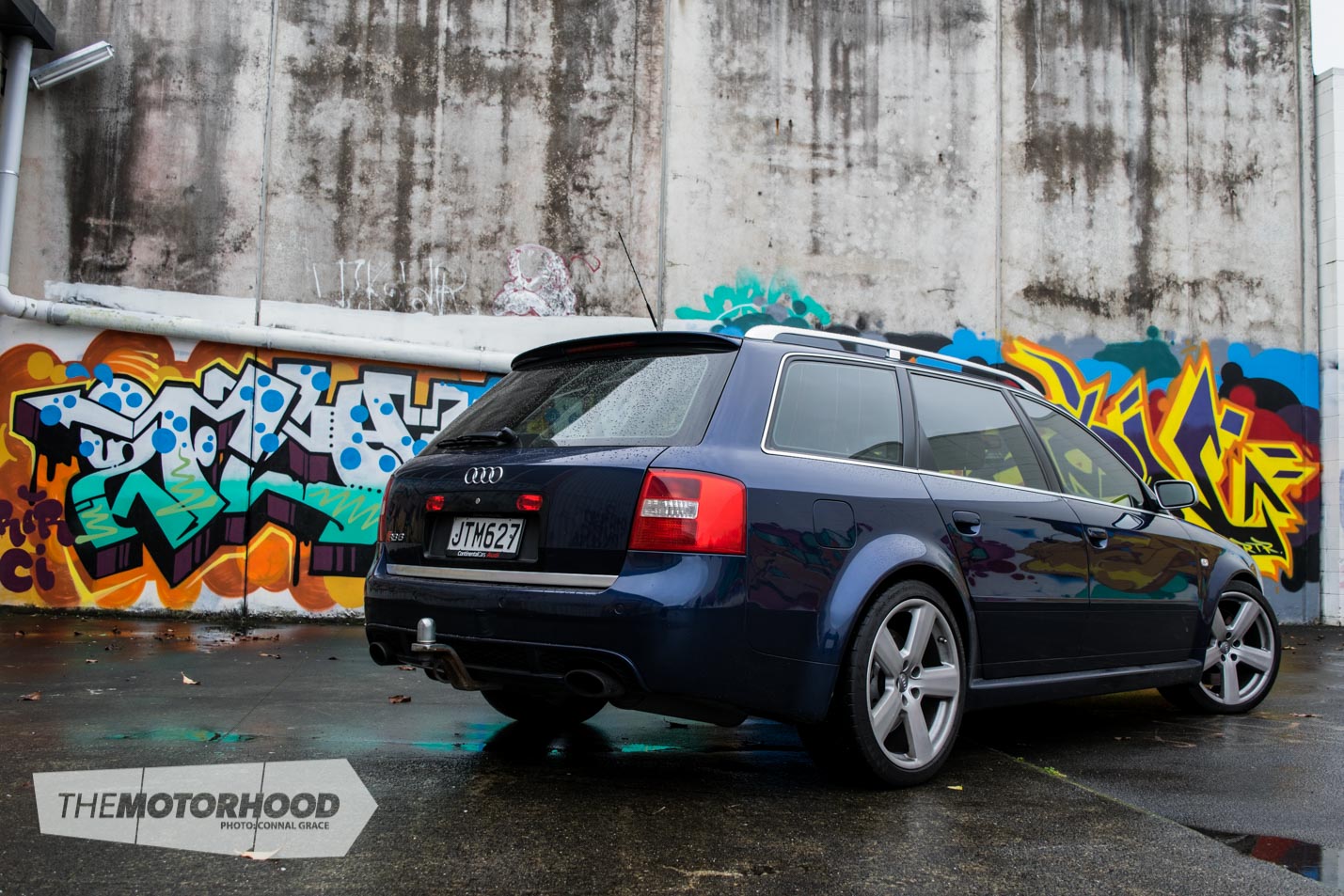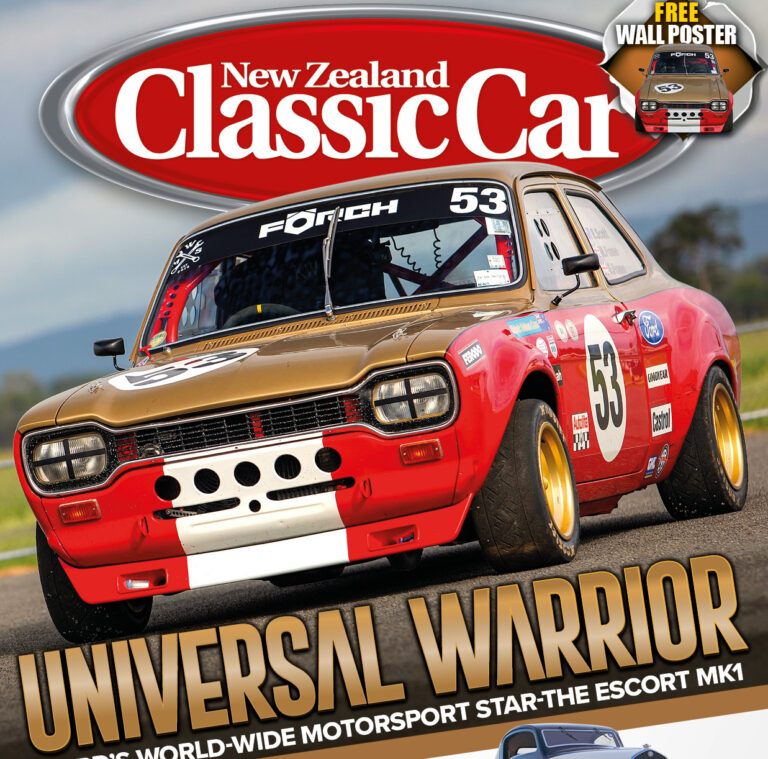As far as good ideas go, buying a 13-year-old German performance car with nearly 200,000km on the clock — after a long, thirst-quenching lunch — is quite low on the list. But I’m not known for my decision-making abilities and sometimes, just sometimes, bad decisions make good stories.
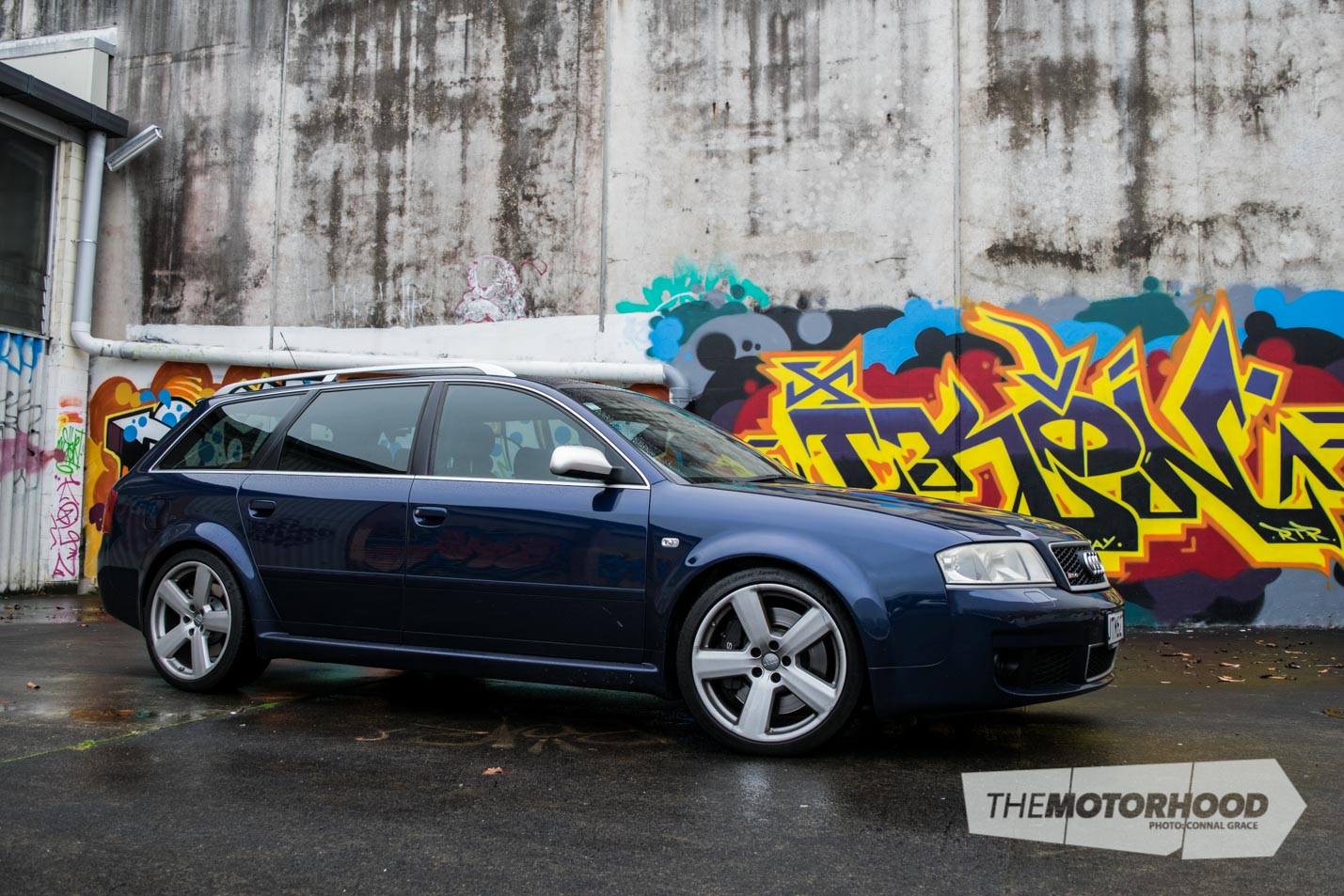
The vehicle in question is a 2003 Audi RS6 Avant. I was able to justify the purchase with that final word. Surely, if I was able to fit a dog and a pram with enough space left for the groceries, I could get away with calling this a sensible car.
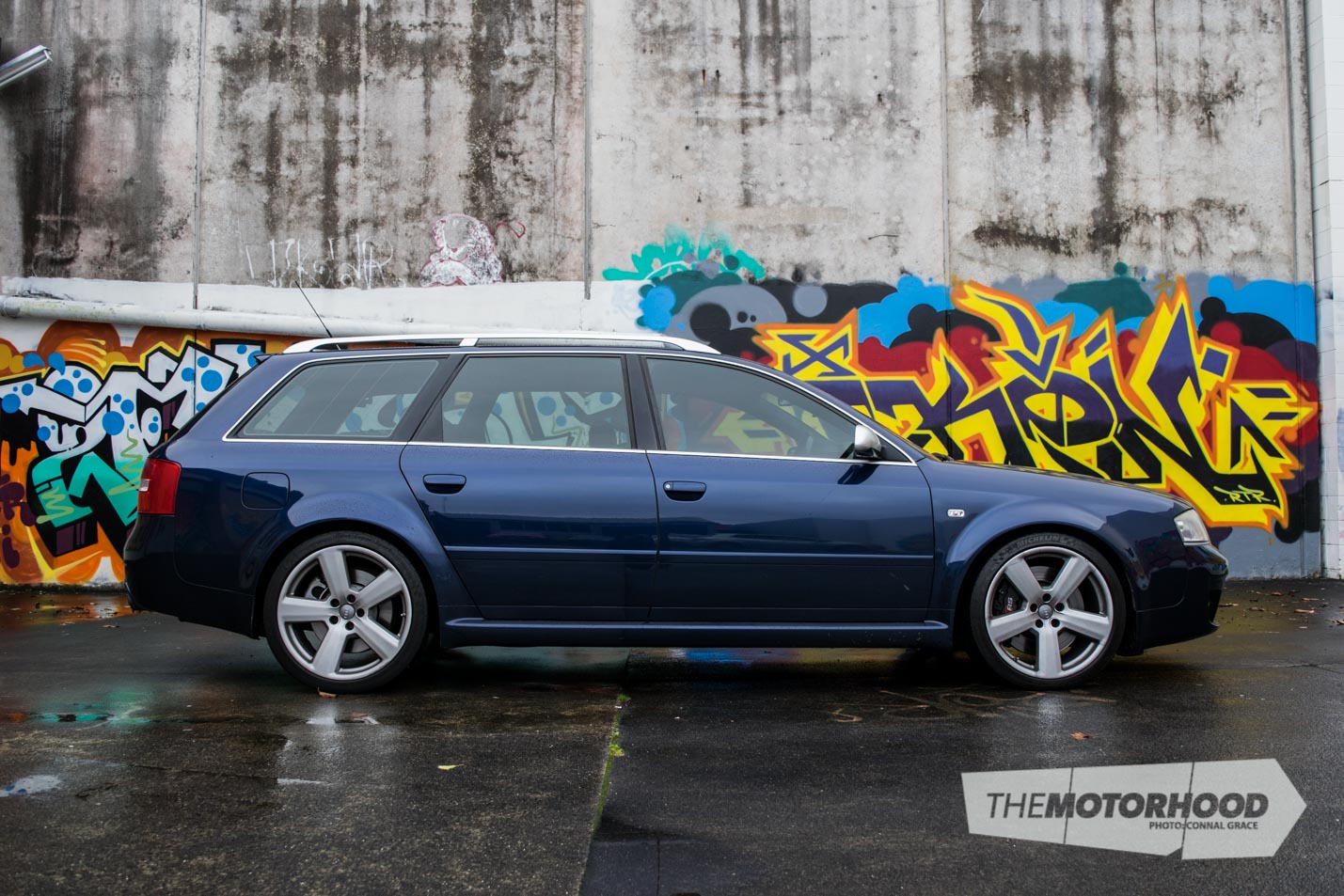
I have a love affair with performance cars from around the turn of the century. One of the main reasons being the eye-watering depreciation they’ve suffered over the years thereby making them relatively affordable cars. The RS6 was around $180,000 out of the box. I picked this one up for pretty close to $20K. Now, I understand why old cars are cheap. They’re unreliable, they become expensive to run, and they may have been abused non-stop for their entire lives, meaning that the gearbox may fall out of the car at any moment. But that doesn’t detract from the fact that this car is still a bucket of fun, it’s ridiculously fast, and it looks fantastic.
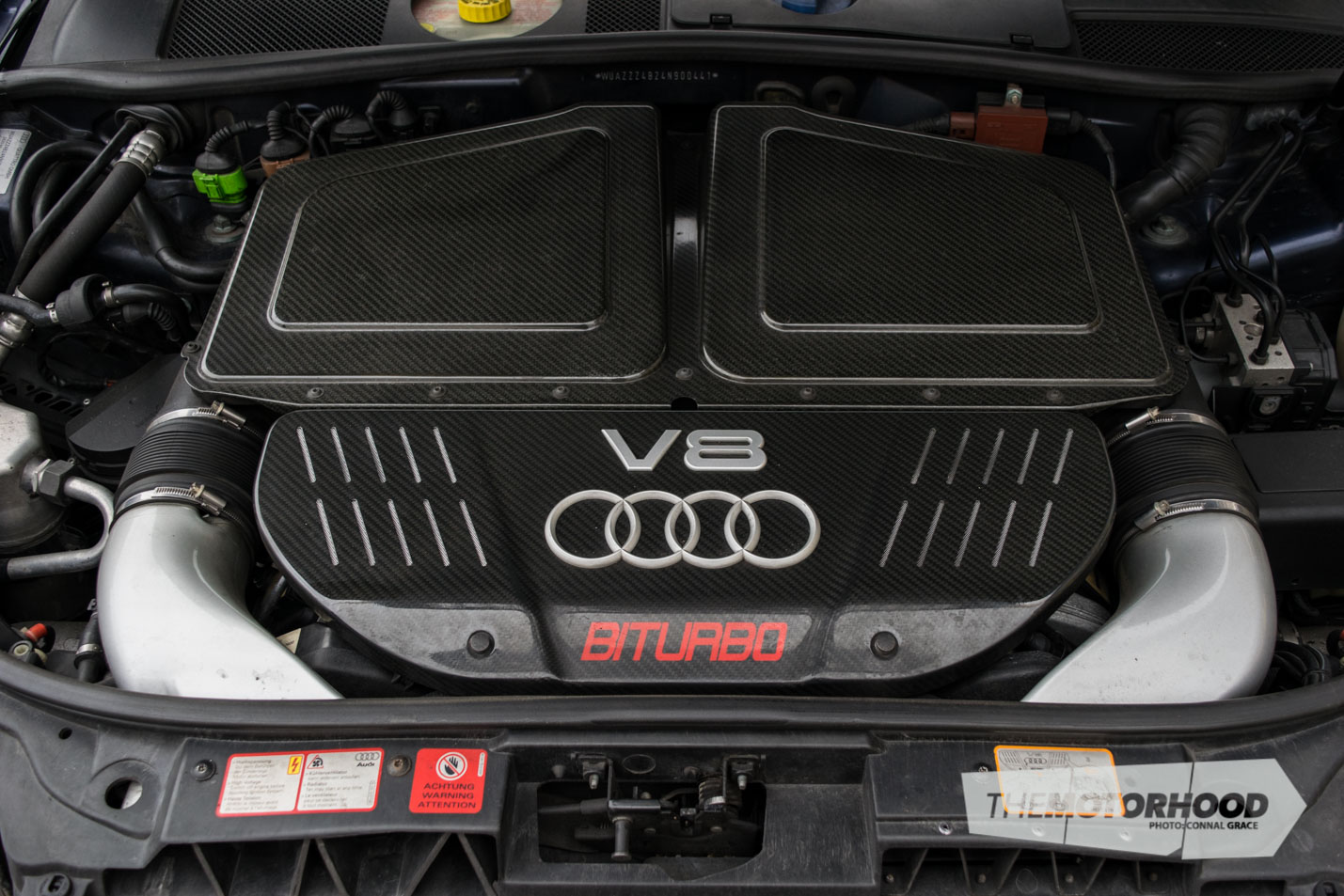
I’ve coveted a C5 RS6 for as long as they’ve been around. Many moons ago, when I was required to wear a tie to work, I owned a 4.2 V8 C5 Audi A6. The A6 wasn’t an amazing car — it wasn’t all that quick, it looked like it had been raised up a few inches, and it was dreadfully thirsty. I only owned it for a couple of months until I realized I was trying to fit into a corporate world that I despised. So I sold it, left my job, and got a Subaru Legacy GTB with a manual gearbox (a fun car that was a sucker for punishment).
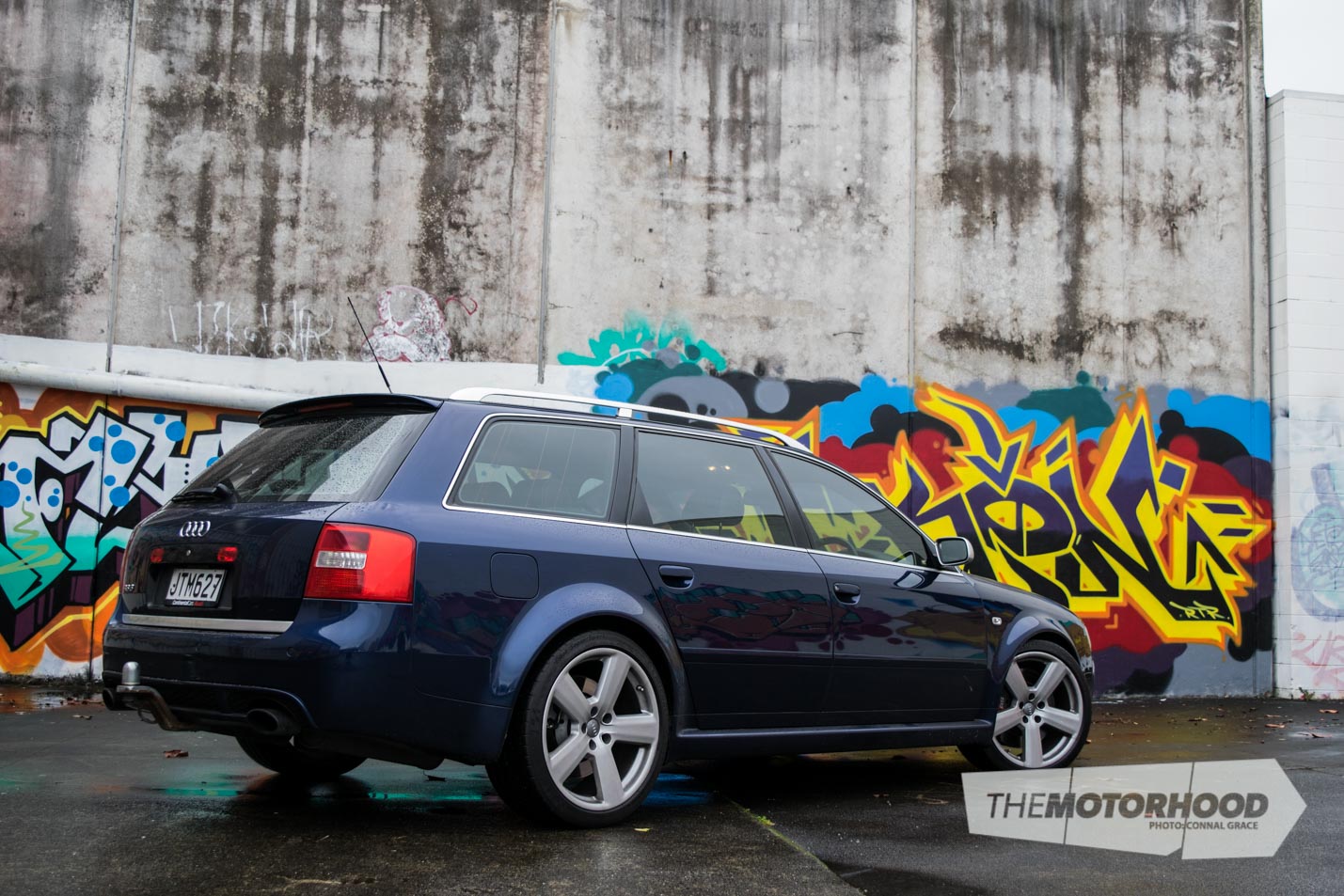
Fifteen years ago, large station wagons were, for the most part, still the vestige of the family man. In New Zealand, owning a big wagon generally meant having 500 litres of boot space dangling over the rear axle of a Holden or a Ford provided by your employer. For the lucky few (mainly the well-heeled of the ladies of the leafier suburbs), there was a number of slightly more sporty, although still bulbous, European estate cars on offer.

But soon, a new breed of family coveted the practicality offered by a big wagon. One with a desire to get from A to B in a great hurry in a cacophony of sound and enormously flared wheel arches.
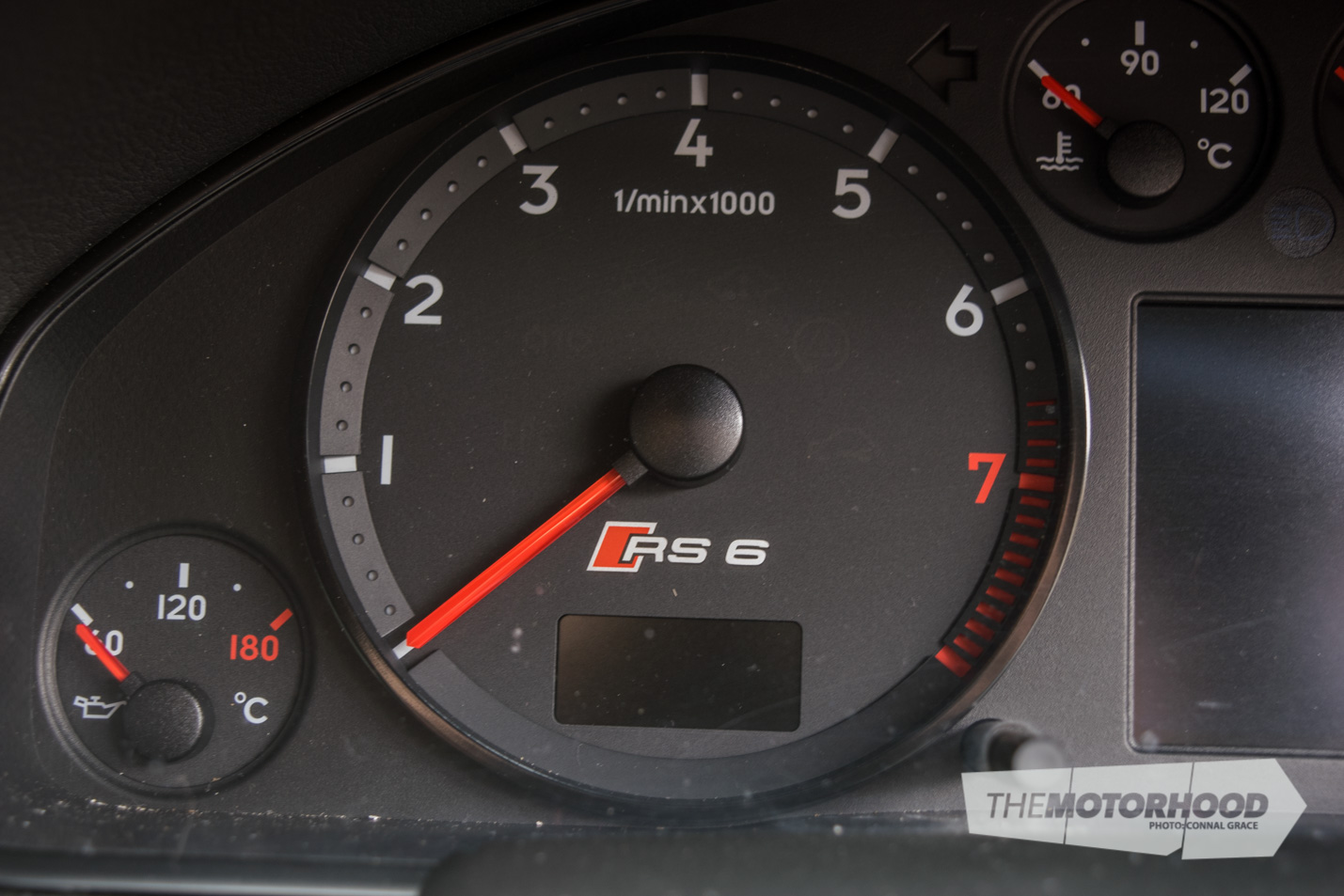
The RS6 was the fourth car released by Quattro GmbH (the wholly owned Audi subsidiary, which I’m sure can be called a ‘skunkworks’). It followed on from their joint venture with Porsche to create the timeless (and still quicker to 100 than the current RS4) RS2, followed by the original (and again, still damn quick) RS4. They also flirted with a large, fast wagon with the end-of-run C4 body shape in 1997, producing just fewer than 1000 models of an S6 Plus. Powered by a 322hp (240kw) V8 engine, these cars were brilliant and proved their mettle. Audi knew there was also an opportunity to create what would become their cornerstone car — a fire-spitting, deep-growling monster to appeal to the bogan encased in a polished suit, therefore, the RS6 was born.
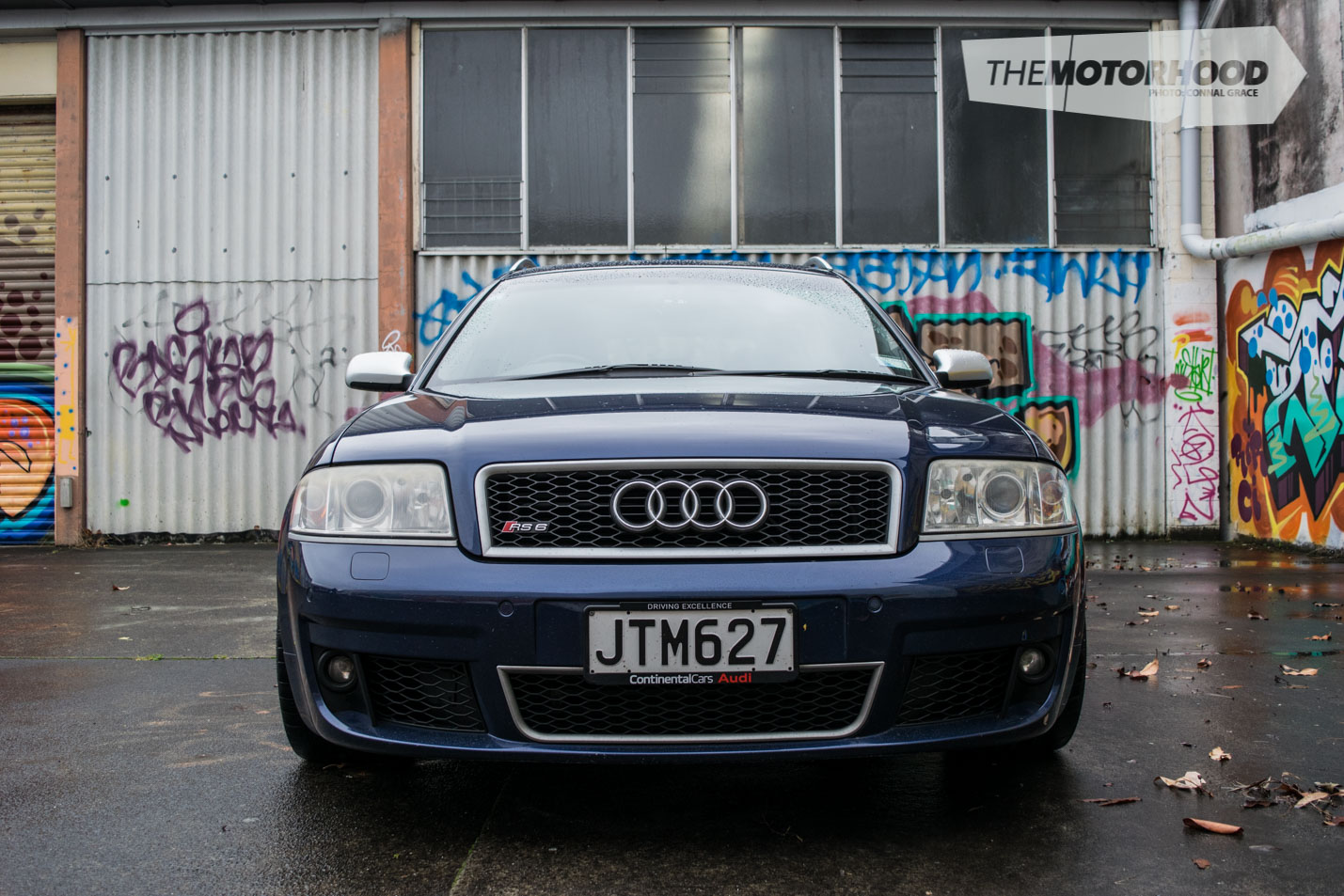
Built as a sedan and a wagon on the end-of-line C5 A6 platform, the RS6 was fitted with a 450hp (335kw) twin-turbo V8 engine. Paired with a five-speed automatic gearbox with steering wheel–mounted paddles, this car was built for a market with a very heavy right foot, and also one who wanted to take on B roads like nothing else. Hitting 100kph in 4.7 seconds and carrying on to god knows what without a limiter, the RS6 made its mark.
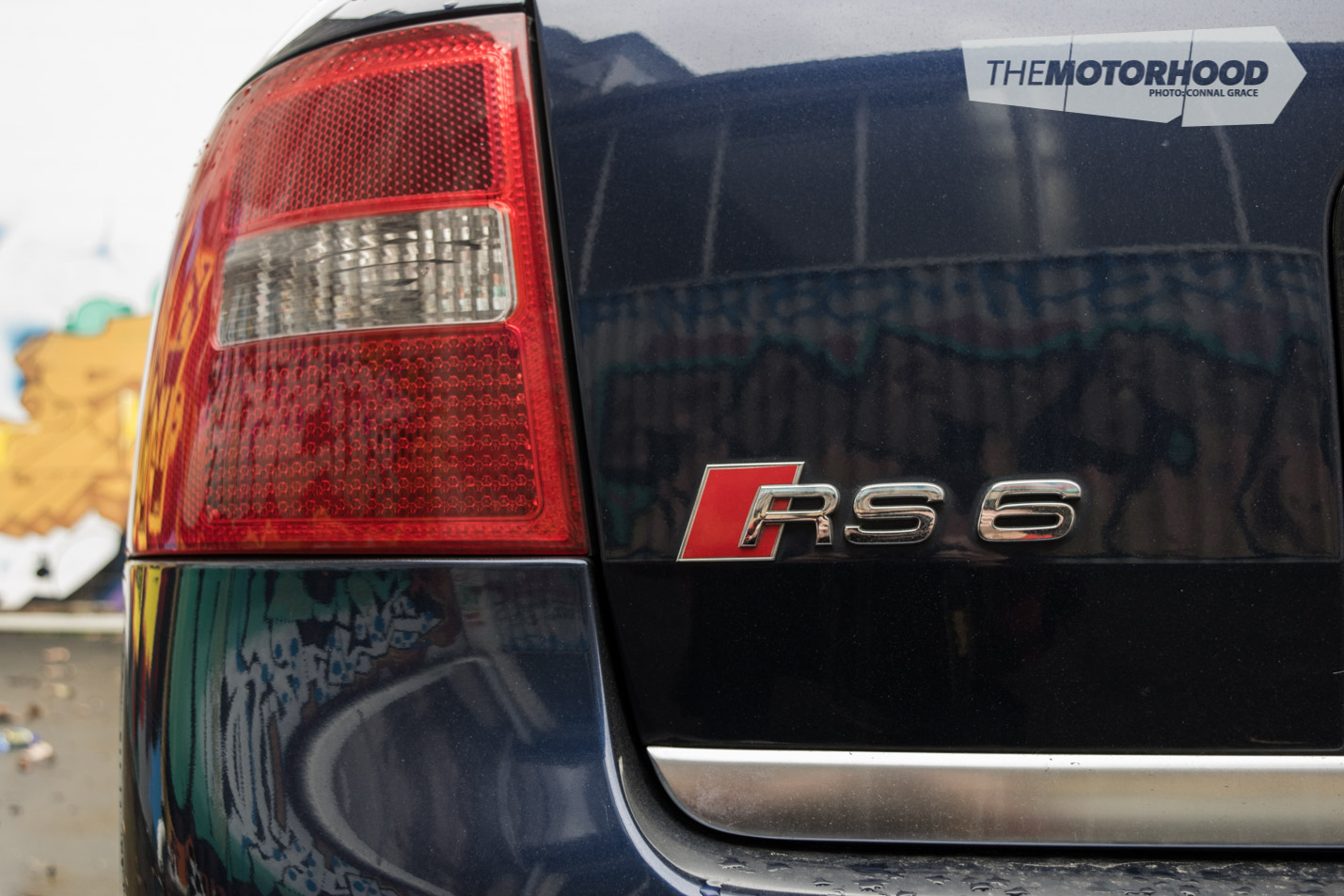
Still today, the old RS6 is quick on the road. Really bloody quick. Back roads are eaten up and the early-but-advanced Quattro system proves some serious technical nous in a time when tech was limited but nous was high. Buyers of new RS models take for granted the fact that their cars will do everything at warp speed without considering a loss of traction, but way back when, this was a new phenomenon. Microsecond decisions by on-board computers meant that each wheel was distributed power when it needed it, thereby keeping lead foots on the road all around the world.
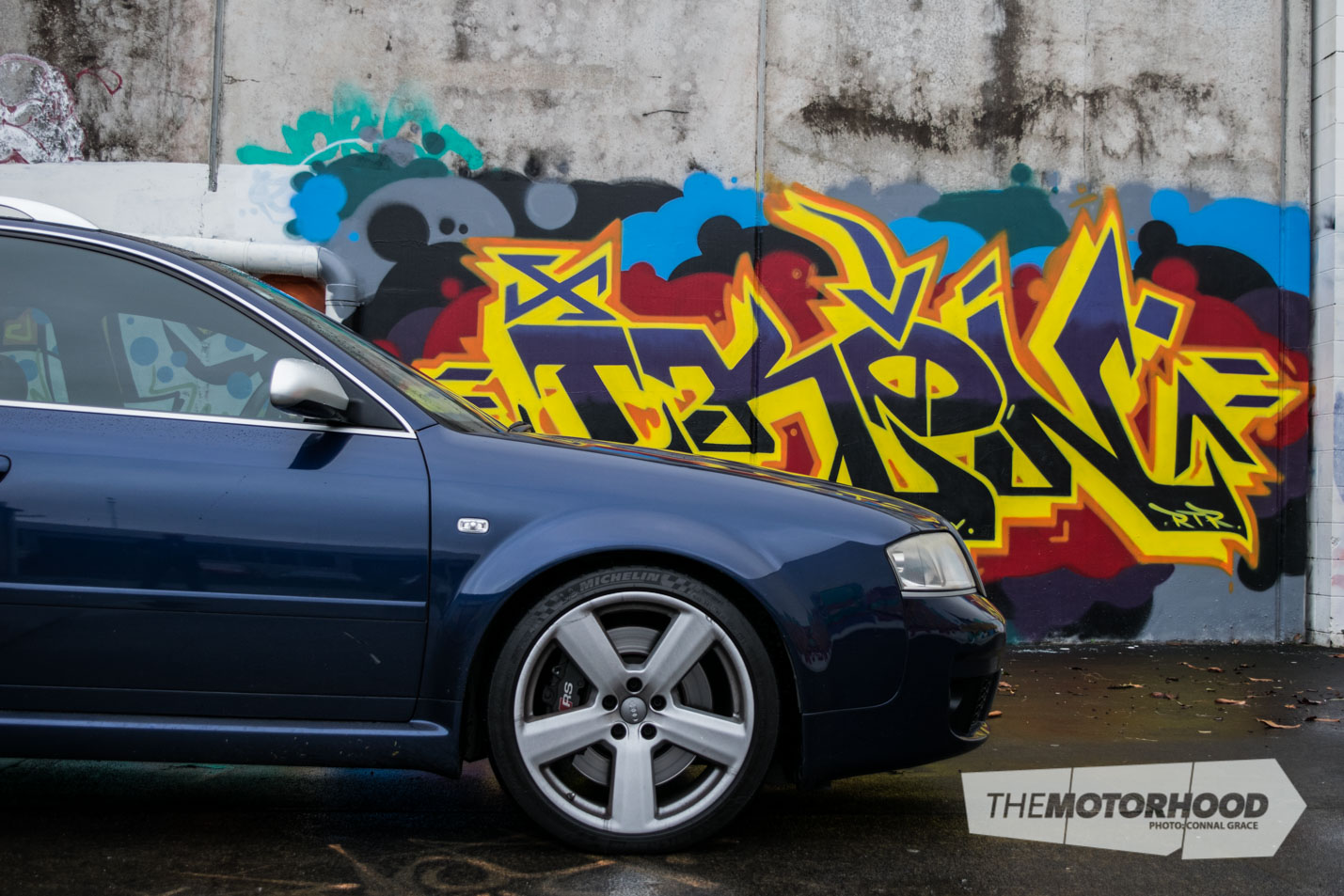
I’ve loved owning the RS6. Sure, it had a few unseen issues that have cost me the best part of a week staying at a Hawaiian resort drinking $19 cocktails, but I’ve had almost as much fun as that would provide, too.
I’m going to let the RS6 go soon as I have my eye on another piece of (slightly more modern) motoring history …
Note: The vehicle featured isn’t the referenced car above, but another one I got my hands on through a trade with an E55 AMG (another brilliant turn-of-the-century car we may feature another time).

